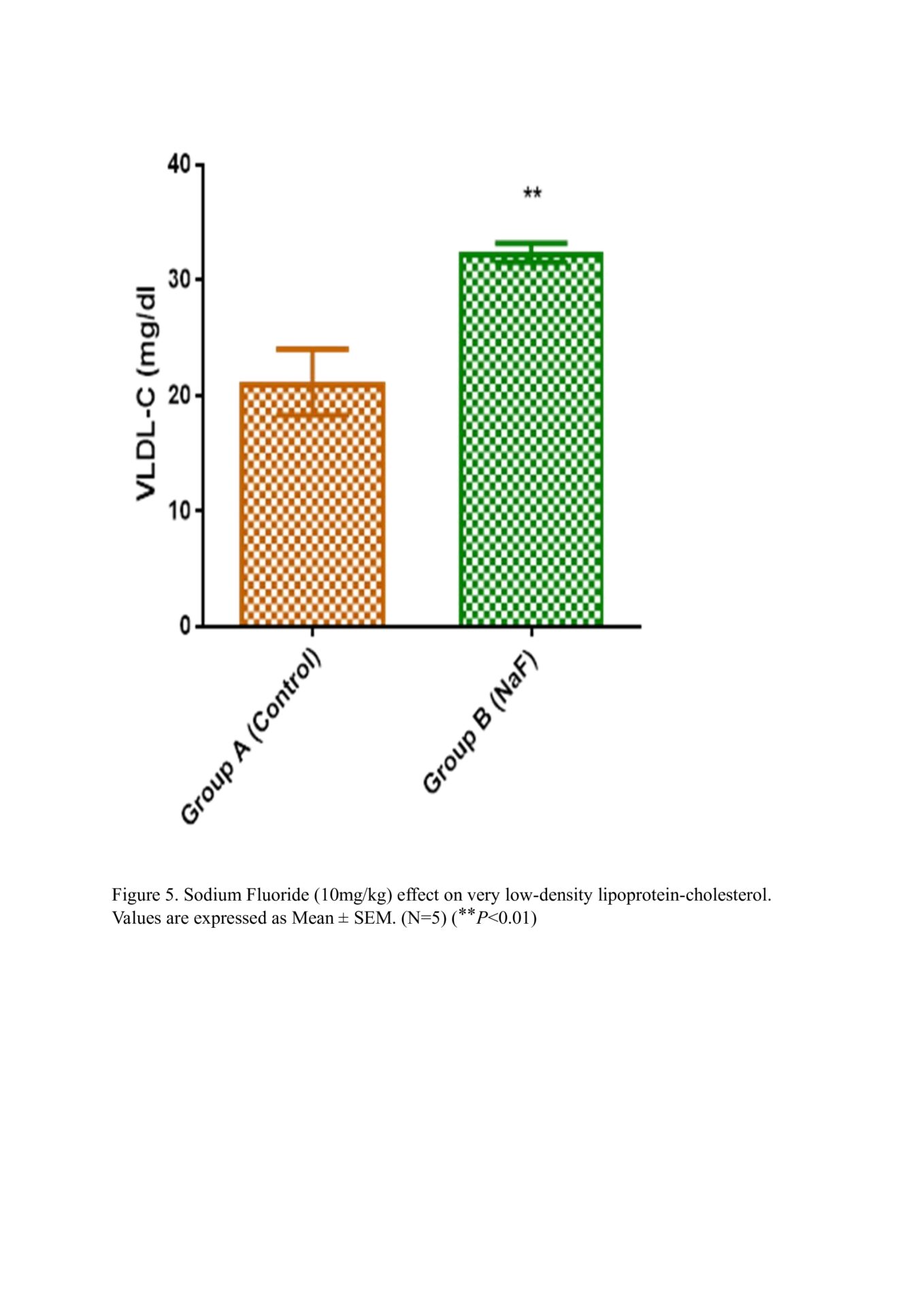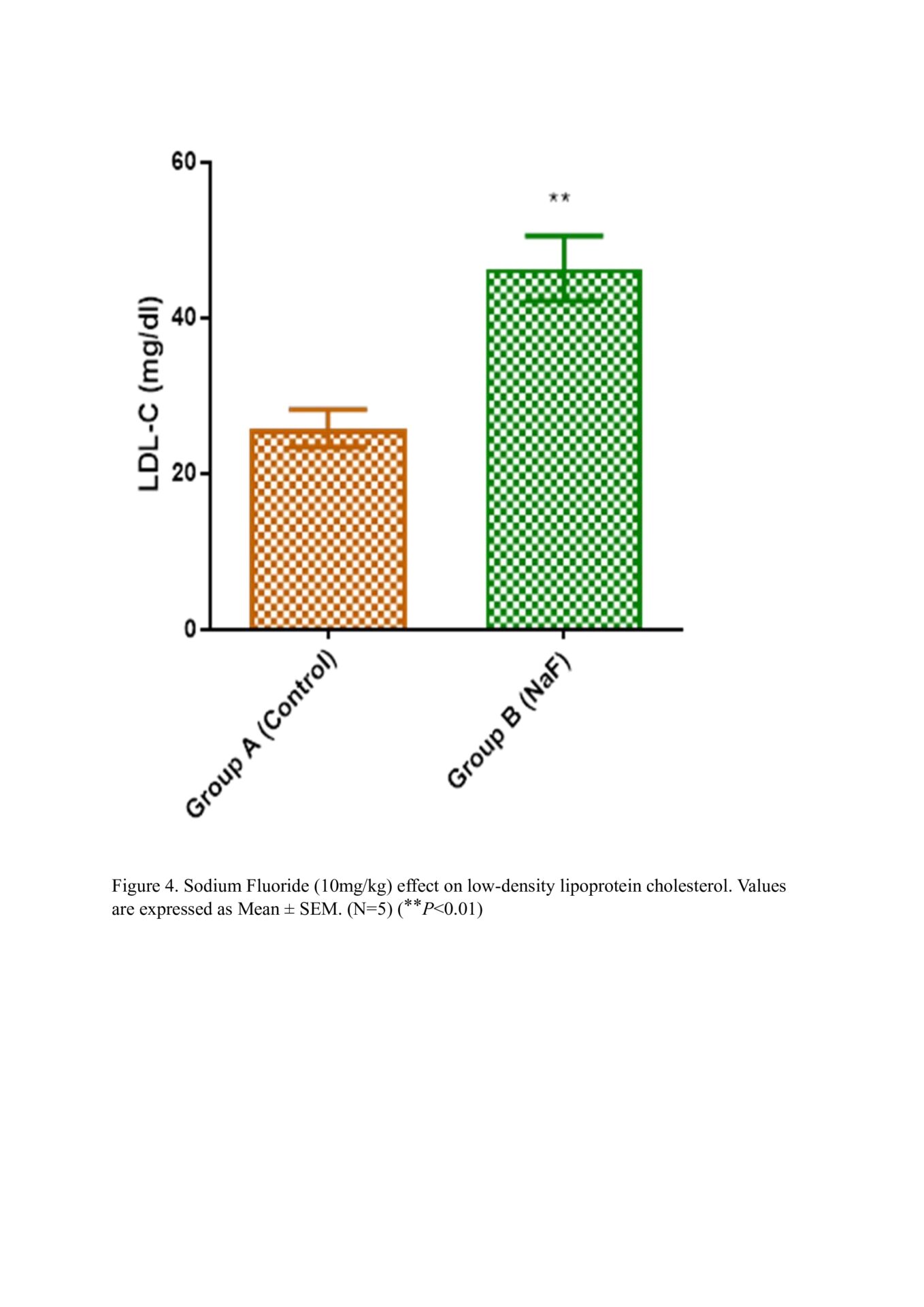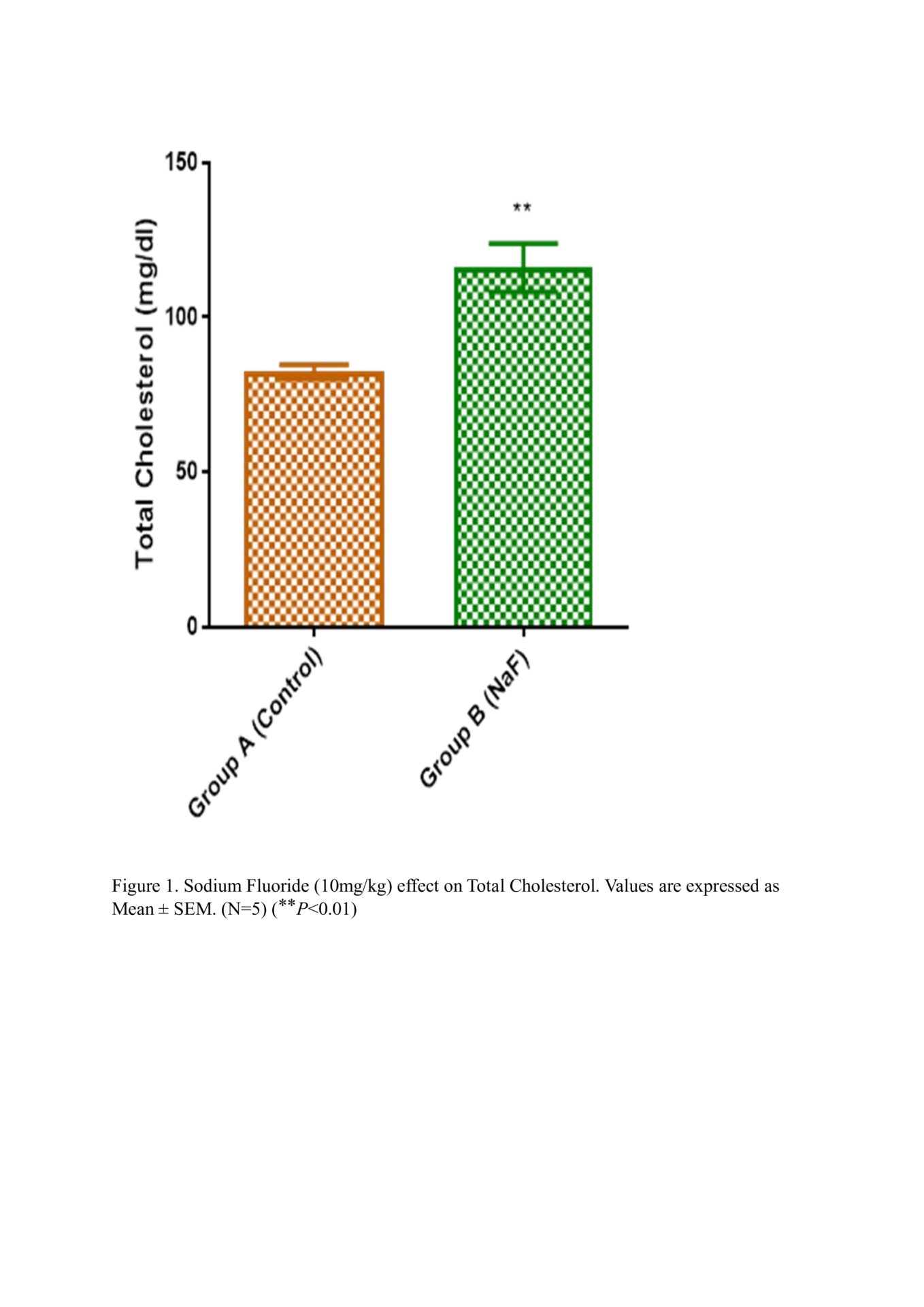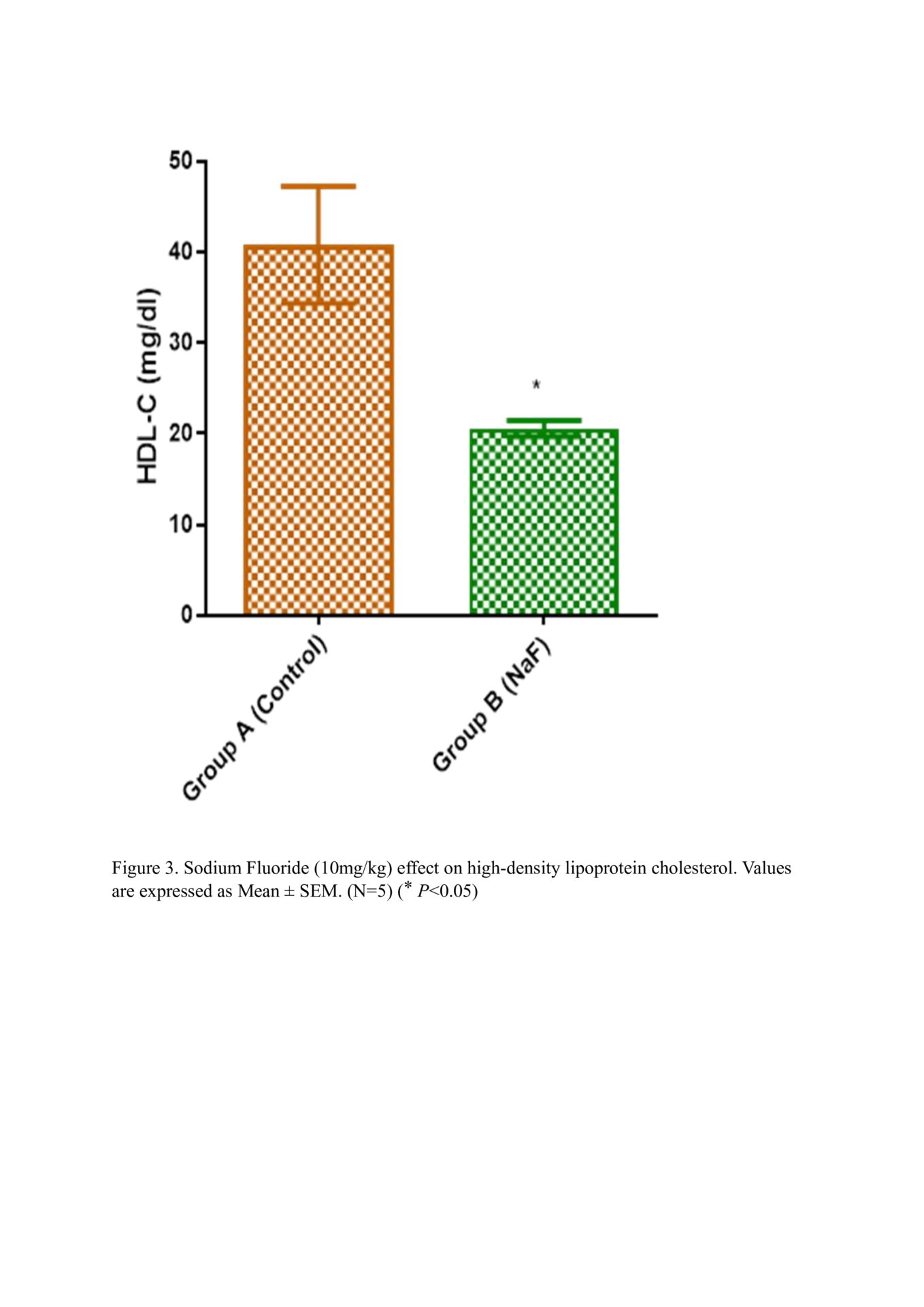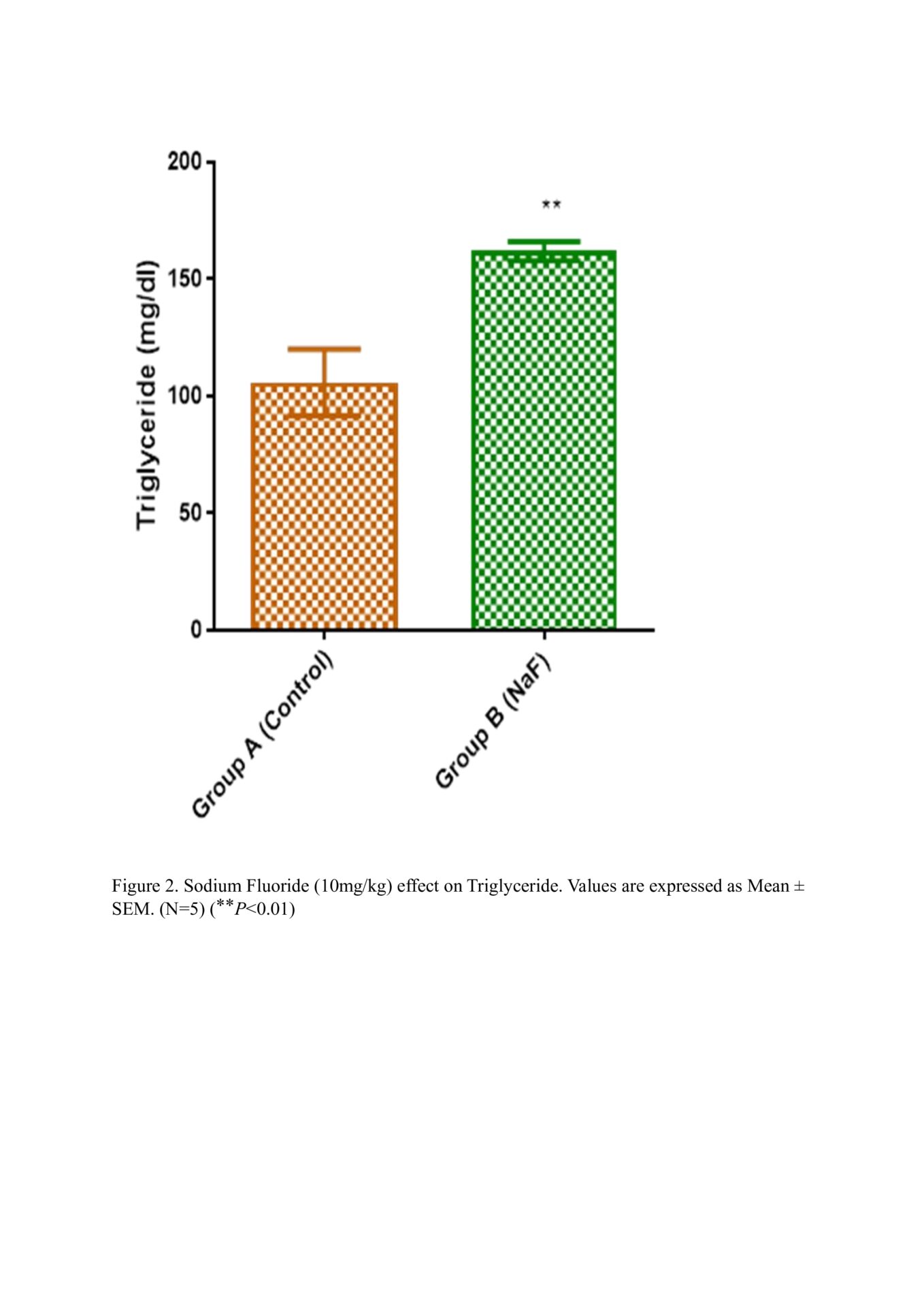This study investigated the effect of sodium fluoride (NaF) on lipid profile in the serum and aorta of male Wistar rats. Sodium fluoride has garnered increased attention due to its potential detrimental effects on human health. Excessive ingestion and accumulation of sodium fluoride from sources like water, toothpaste, and pesticides can trigger dyslipidemia in rats. These heightened disturbances in the lipid profile, pose a significant risk and may predispose individuals to severe vascular and cardiovascular-related diseases, which are the leading causes of global mortality. The study involved ten male Wistar rats weighing 150-180 grams. The rats were divided into two groups (n=5) Group I (Control), received distilled water, and Group 2 received an oral dose of 10 mg/kg of sodium fluoride daily for 21 days. Lipid profiles [Total Cholesterol (TC), Triglycerides (TG), High-Density Lipoprotein Cholesterol (HDL-C), Low-Density Lipoprotein Cholesterol (LDL-C), Very Low-Density Lipoprotein Cholesterol (VLDL-C)] were determined in the serum of male Wistar rats using UV/VIS spectrophotometer. Ethical consideration was obtained for this work from the University of Ibadan Animal Care and use research ethical committee. Data analysis was conducted using descriptive statistics and a student t-test with a significance level set at α=0.05. Total cholesterol (116.10±7.84 vs 82.37±2.27 mg/dL), triglyceride (161.90±4.06 vs 105.80±4.26 mg/dL), VLDL-C (32.38±0.81 vs 21.16±2.85 mg/dL), and LDL-C (46.37±4.17 vs 25.82±2.40 mg/dL) levels significantly increased (p<0.05), while HDL-C (20.57±0.86 vs 40.80±6.44 mg/dL) level reduced significantly (p<0.05) in NaF compared with control. There was moderate congestion of the lumen in the aortic vessel in NaF, which was absent in control. These findings suggest that sodium fluoride exposure causes dyslipidemia. Hypertension and dyslipidemia are major risk factors for cardiovascular disease, responsible for global morbidity and mortality. Given these results, continuous fluoride exposure in populations residing in regions with endemic fluoride levels should be a matter of significant concern given the potential health risks associated with sodium fluoride exposure, emphasizing the need for vigilance in affected regions.

